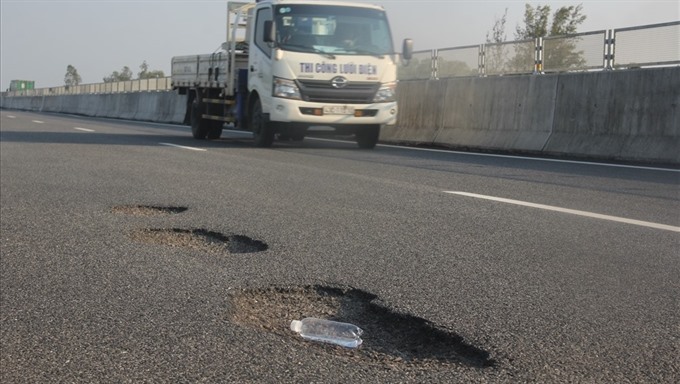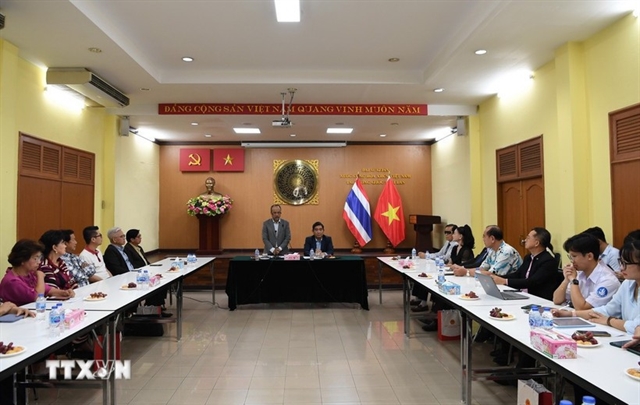 Society
Society

Transport minister Nguyễn Văn Thể on Thursday sent a working group to examine parts of the new Đà Nẵng-Quảng Ngãi Expressway that were reported to be damaged just more than one month after the expressway was put into use.
 |
| Many parts of the Đà Nẵng-Quảng Ngãi Expressway were damaged. — Photo Vnews |
HÀ NỘI — Transport minister Nguyễn Văn Thể yesterday sent a working group to examine parts of the new Đà Nẵng-Quảng Ngãi Expressway that were reported to be damaged just a month after the expressway was opened.
The entire expressway was opened to traffic on September 2.
The road has total length of over 139.2km, including 131.5km of high-speed road and another 7.7km linking the expressway with National Highway 1A. It traverses Đà Nẵng City, central Quảng Nam and Quảng Ngãi provinces, which form part of the central key economic region.
It allows speeds of up to 120km per hour, cutting travel time from Đà Nẵng to Quảng Ngãi to one and a half hours from three hours when using National Road 1A.
According to the Directorate for Roads of Việt Nam, 400m of the road has been damaged. Many potholes were created on the road with some 30cm wide, 50cm long and 5cm deep.
Basing on the examination results, the ministry plans to temporarily stop collecting toll fees on the road and ask investors to fix the damaged parts, he said at an online conference held yesterday to review traffic safety in the past nine months of the year.
At the conference, a representative from Quảng Nam province said the damage was caused by prolonged heavy rains and the high volume of vehicles travelling on the road.
However, Deputy Prime Minister Trương Hòa Bình said weather and the number of vehicles were considered during the design and construction process of the project so the mentioned causes of the damage were unreasonable.
Transport minister Thể also said the road could have been damaged due to low construction quality, not because of bad weather conditions or overloaded trucks.
Deputy PM Bình asked the transport ministry to work to define the cause leading to the damage, clarify responsibilities of those involved and strictly punish violators.
Earlier, a representative from the Directorate for Roads of Việt Nam said the road was damaged due to failures during the construction process.
The project, beginning in 2013, cost more than VNĐ34.5 trillion (US$1.47 billion).
The expressway is expected to create opportunities for central localities to make breakthroughs, attract investment and promote the development of industrial parks and tourism along the central coast.
It is also hoped to boost transport connectivity from the Việt Nam-Laos-Cambodia economic triangle through the East-West Economic Corridor to seaports in the central region.
After being fully open to traffic, the volume of vehicles travelling on the road reach 6,000 per day. — VNS




